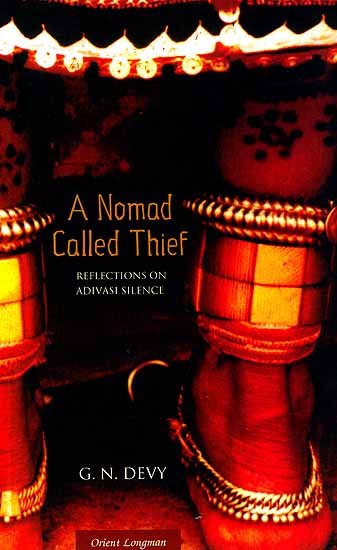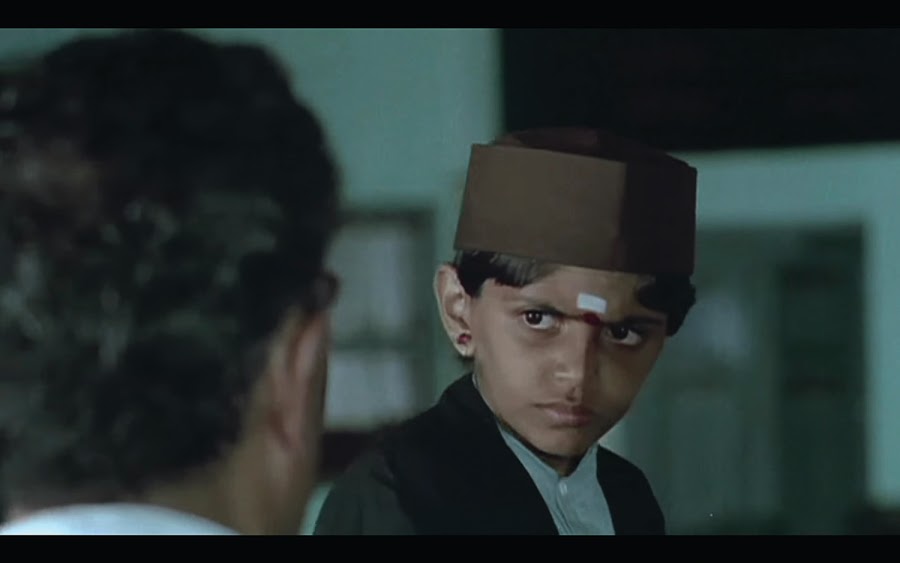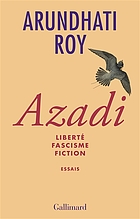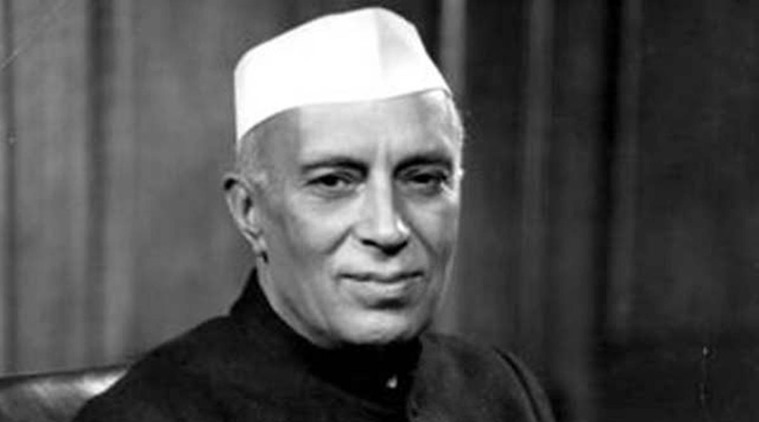
Reflections on Adivasi Silence and Voice by Ganesh [G.N.] Devy | Publications >>
“Education has to liberate a person from narrow world view and the boundaries of caste, community, race and gender. Teachers have been entrusted with the responsibility of moulding the young minds to understand the world and make it better.” – Shri Pranab Mukherjee, President of India (National Award 2014 to Teachers)
Diversity, plurality and tolerance are “core values of our civilisation”: Rashtrapati Bhavan >>
Hardly anyone seems to have paid attention to India’s dismal showing at the UN Human Rights Council’s universal periodical review when the latter alleged that India is “all words, no action” on working against caste and related discrimination. The allegations are built around, among other things, data from the National Crime Records Bureau, which says, “Atrocities against Dalit women include: Verbal abuse and sexual epithets, naked parading, pulling out of teeth, tongue and nails, and violence, including murder. Dalit women are also threatened by rape as part of collective violence by higher castes.” The review is startling also because it alleges that over 160 million Indians continue to endure caste-based persecution. […]
Caste is alive in Indian cities. Discrimination, though subtle, exists. However, things are changing. Says André Béteille, professor emeritus of sociology, Delhi University: “The growth and expansion of a new middle class, attendant on demographic, technological and economic changes is altering the operation of caste.” […]
Notions of pollution, however, prevail. Mari Marcel Thekaekara, a human rights activist and writer based in Gudalur, Tamil Nadu, says “in an upper middle-class Maharashtrian (mixed-caste) building in Worli, a bai told my daughter hers is the only family that doesn’t keep a separate glass for the bai.”
Where caste has inadvertently become prominent in urban environs is in the form of relative deprivation — a feeling of being deprived of what one believes oneself to be entitled to — arising from the reservation policies of the Indian government (even though they have done a lot of good — for example, 13% of IAS officers now are from lower castes, as opposed to being negligible at the time of Independence). A feeling of resentment seems to be simmering among people of the general category. […]
So, while urbanisation is undermining the dehumanising phenomena of caste, social notions are being chipped away far more slowly. […]
1) Law & enforcement
* The Protection of Civil Rights (PCR) Act 1955 — An act to prescribe punishment for the 1 [preaching and practice of ‘Untouchability’] for the enforcement of any disability arising therefrom for matters connected therewith.
* The Scheduled Castes and Scheduled Tribes (Prevention of Atrocities): POA Act, 1989 — An act to prevent the commission of offences of atrocities against members of Scheduled Castes and the Scheduled Tribes, to provide for special courts for the trial of such offences […]
* National Commissions
— The first commission for SCs & STs was set up in August 1978.
— In 1987, the Commission for SCs & STs was renamed as the National Commission for Scheduled Castes and Scheduled Tribes. It was set up as a National Level Advisory Body to advise the government on policy issues and development of SCs & STs.
— The statutory National Commission for Scheduled Castes and Scheduled Tribes came into being after the passing of the Constitution (Sixty Fifth Amendment) Bill, 1990
— Constitution (89th Amendment) 2003 came into force in 2004 — the erstwhile National Commission for Scheduled Castes & Scheduled Tribes was replaced by (1) National Commission for Scheduled Castes and (2) National Commission for Scheduled Tribes.
— May 16, 2012: Parliament passed a Bill that sought to exempt some central institutions from implementing the other backward castes quota where it exceeds the 50% reservation limit set by the SC. The Central Educational Institutions (Reservation in Admission) Amendment Bill, 2012, was passed by a voice vote in the Lok Sabha on May 16.
— May 14, 2012: LS Speaker Meira Kumar said, “It’s an irrefutable truth that democracy and caste system can’t go hand in hand.”
— June 6, 2012, Jaipur: Alleging that the Rajasthan govt was ‘ignoring’ Gujjars and other castes’ reservation issue, Gujjar leader KS Bainsla began a ‘sit-in’ in Sawaimadhopur.Compiled By: Samar Khurshid
2) Education
Reservation Caste in central government funded higher education institutions, 22.5% of available seats are reserved for Scheduled Caste (SC) and Scheduled Tribe (ST). This percentage has been raised to 49.5% by including an additional 27% reservation for OBCs. This ratio is followed even in Parliament and all elections where a few constituencies are earmarked for those from certain communities (which keeps rotating as per the Delimitation Commission). […]
4) Employment
The percentage of reservation in direct recruitment on all India basis by open competition for SCs and STs is 15% and 7.5% respectively. Direct recruitment on all India basis otherwise than by open competition reservation for SCs and STs is 16.66% and 7.5% respectively. 3rd October 2000 — relaxations and concessions in the matter of promotion were restored to SCs and STs. […]
Source: “Caste & the city” by Pankaj Mullick, Hindustan Times, New Delhi , June 09, 2012
Address : http://www.hindustantimes.com/News-Feed/News/Caste-amp-the-city/Article1-868659.aspx
Date Visited: Sun Jun 10 2012 11:22:24 GMT+0200 (CEST)

At the bottom of all this bottomless/ enterprise to keep simple the heart’s given beat,/ the only risk is heartlessness.
The final lines of an early poem by AK Ramanujan titled “The Hindoo: The Only Risk”, quoted by Nakul Krishna in “RK Narayan’s second opinions” (The Caravan, 1 October 2018)
https://caravanmagazine.in/literature/rk-narayan-second-opinions
Who owns India? Who owns the forests and rivers, the farmlands eyed by industry, the slums coveted by real estate developers and airport authorities, the hills and plateaus desired by mining barons? In roughly a third of the country, this is no idle question. […]
The nationalists of the 20th century had a simple answer to who owned the land: Indians did. The British did not. But when the nationalists assembled the jigsaw puzzle of diversities to define the Indian nation, some pieces got left out of consideration. Among those were the original tribal inhabitants of the country, who are now called adivasis. One experience many adivasis share is the overriding of their rights in the name of development and in the interests of other Indians. “It’s as if middle and upper classes and castes have seceded into outer space,” the writer and political activist Arundhati Roy says. “They look down and say, ‘What’s our bauxite doing in their mountains, what’s our water doing in their rivers?’”
Source: “Birsa Munda, 1875-1900” by Sunil Khilnani (Professor of Politics and History, Ashoka University)
URL: https://www.outlookindia.com/magazine/story/birsa-munda-1875-1900/296673
Date Visited: 7 July 2022

Acknowledging her commitment to political action in a world of “growing authoritarianism“, the Charles Veillon Foundation (Lausanne) awarded the European Essay Prize in 2023 on Arundhati Roy for her lifetime achievement; prompted by the French translation of a compilation of essays titled “Azadi” (2021) which includes essays on language, public as well as private, and on the role of fiction and alternative imaginations in current times. – The Hindu (16 June 2023)
The history of violence is as old as civilisation. Settled, as opposed to nomadic, societies were mostly hierarchical, and no one got to be at the top — or wield power as a king — without violence being involved. Not surprisingly, history-writing for a long time was synonymous with the biographies of kings and chronicles of war. Liberal democracy, with its promise of equality, was supposed to resolve the problem of violence. While this promise has somewhat held in the mature democracies of the West, it hasn’t in the post-colonial world where India belongs.
Violence has dogged Indian democracy right from its birth. How do we explain the continued co-existence of violence and democracy despite the fact that the two are antithetical to each other? Neera Chandhoke, a political science scholar, attempts to answer this question in The Violence in Our Bones: Mapping The Deadly Fault Lines Within Indian Society.
In a slave society, the master isn’t required to unleash violence every single day. Just because the slave seems happy to serve his master doesn’t make the latter non-violent. The structural violence of slavery or untouchability doesn’t need intentionality precisely because the intent is encoded in the collective memory of the tremendous violence that, in the distant past, accomplished the subjugation of a community. It is this memory, passed on through generations, that enforces a violent act of ritual humiliation so very ‘non-violently’.
Source: “The Violence in Our Bones: Mapping the Deadly Fault Lines Within Indian Society’ review: An ideology of hatred” by G. Sampath (The Hindu, 6 November 2021)
URL: https://www.thehindu.com/books/books-reviews/the-violence-in-our-bones-mapping-the-deadly-fault-lines-within-indian-society-review-an-ideology-of-hatred/article37337087.ece
Date Visited: 10 November 2021
Truth (Satya) implies Love, and Firmness (Agraha) engenders and therefore serves as a synonym for force … that is to say, the Force which is born of Truth and Love or Non-violence.
Mahatma Gandhi on Civil Disobedience and Satyagraha in The Essential Gandhi: His Life, Work, and Ideas >>
The theoretical debate on caste among social scientists has receded into the background in recent years. This is unfortunate, as scholars tend to return to older works to understand the issue, and these works do not really reflect the knowledge we have at present. I wrote a book on the subject recently (Transaction and Hierarchy, Elements for a Theory of Caste–Manohar, Delhi, 2017) and I feel it may be useful to summarize some of my findings here. In this short article, I simply state my views – references can be found in the book mentioned. But first, let me stress that caste is in no sense disappearing: indeed, the present wave of neo-liberal policies in India, with privatisation of enterprises and education, has strengthened the importance of caste ties, as selection to posts and educational institutions is less based on merit through examinations, and increasingly on social contact as also on corruption. There is a tendency to assume that caste is as old as Indian civilization itself, but this assumption does not fit our historical knowledge. To be precise, however, we must distinguish between social stratification in general and caste as a specific form. There was considerable class difference in the Indus civilization, and there is no doubt that the urban developments of the early part of the last millennium before the Common Era were stratified societies. At the time of Buddha and Mahavir – the middle of that millennium – we can distinguish both social classes and ethnic groups: there is no doubt that ethnic and social stratification was present. But we look in vain for the term jati, which only comes to designate a caste by the time of the Guptas, at the beginning of the Common Era. It is true that the Varnas – the four-category classification of Indian society – is older than this: Brahmins are clearly distinguishable as a group in later Vedic times (ca. 1000 B.C.E.) and the Kshatriya category becomes important between that time and the time of the Buddha. But the two last categories – Vaishya and Shudra – were not constellated into groups even then. […]
From the early modern period till today, then, caste has been an intrinsic feature of Indian society. It has been common to refer to this as the ‘caste system’. But it is debatable whether the term ‘system’ is appropriate here, unless we simply take for granted that any society is a ‘social system’. First, and this is quite clear when we look at the history of distinct castes, the ‘system’ and the place various groups occupy within it have been constantly changing. Second, no hierarchical order of castes has ever been universally accepted […] but what is certain is that there is no consensus on a single hierarchical order.
Source: “Caste: History and the Present” by Harald Tambs-Lyche (Professor Emeritus, Université de Picardie, Amiens) in Academia Letters, Article 1311 (2021), pp. 1-2
URL: https://www.academia.edu/49963457
Date Visited: 17 April 2024
[Bold typeface added above for emphasis]
“Casteism [*] is the investment in keeping the hierarchy as it is in order to maintain your own ranking, advantage, privilege, or to elevate yourself above others or keep others beneath you.” – Book review quoting Caste: The Origins of Our Discontents by Isabel Wilkerson
“Two prominent figures who have significantly contributed to this discourse are Mahatma Gandhi, Father of the Nation, and Bhimrao Ramji Ambedkar, Father of the Constitution. The two stalwarts of Indian politics, while revered equally by the public, had contrasting views on the caste system. […] And yet, despite their differences, they developed an understanding to work for the betterment of the marginalised.” – Rishabh Sharma in “How Ambedkar and Gandhi’s contrasting views paved way for caste reservation” (India Today, 6 October 2023) | Learn more >>
Nehru was fascinated by the spontaneity of tribal culture and their capacity of joy and heroism in spite of their appalling poverty, destitution, and ignorance. […] In Nehru’s view, the process of modernization must not be taken as forcing a sudden break with the tribals past but help them build upon it and grow by a natural process of evolution.
Dr. Chittaranjan Mishra in “Tribal Philosophy and Pandit Nehru” (Odisha Review, November 2017) | Learn more >>

Photo © Indian Express
See also
Adverse inclusion | Casteism | Rural poverty
Childhood | Tribal Children’s Right to Education in India
Demographic Status of Scheduled Tribe Population of India (Census figures 2011)
Fact checking | Figures, census and other statistics
Human Rights Commission (posts) | www.nhrc.nic.in (Government of India)
Search tips | Names of tribal communities, regions and states of India
“What is the Forest Rights Act about?” – Campaign for Survival and Dignity
“Who are Scheduled Tribes?” – Government of India (National Commission for Scheduled Tribes, NCST)

Human trafficking is a crime. To report in India, call Shakti Vahini
+91-11-42244224, +91-9582909025 or the national helpline Childline on 1098.
National Programme for Child Labour Free India | PDF-Repository (70 KB) >>
“As per a study on human trafficking, the state of Jharkhand has emerged as India’s trafficking hub with thousands of tribal women and girls being trafficked out of the state each year to Delhi, Punjab, Haryana and beyond [while] human traffickers are also involved in many cases of missing children.” – The Wire | Shakti Vahini | Tourism locations | Adivasi tribal bondage slavery trafficking (Safe search) >>
Find scholarly books, poetry and fiction relating to tribal culture – Indian publishers
List of sites covered by this Google custom search engine
To find children’s and educational books or search Indian periodicals, magazines, web portals and other sources safely, click here >>
Search tips
Combine the name of any particular state, language or region with that of any tribal (Adivasi) community.
Add keywords of special interest (music, poetry, dance just as health, sacred grove and biodiversity); learn about the rights of Scheduled Tribes such as the “Forest Rights Act” (FRA); and the United Nations “Declaration on the Rights of Indigenous Peoples”, “Universal Declaration of Human Rights”, “women’s rights”, or “children’s right to education”.
Ask a question that includes “tribal” or “Adivasi”, for instance: “Adivasi way of life better?” (or “tribal way of life worse?”)
Specify any particular issue or news item (biodiversity, bonded labour and human trafficking, climate change, ecology, economic development, ethnobotany, ethnomedicine, global warming, hunter-gatherers in a particular region or state, prevention of rural poverty, water access).
For official figures include “scheduled tribe ST” along with a union state or region: e.g. “Chhattisgarh ST community”, “Himalayan tribe”, “Scheduled tribe Tamil Nadu census”, “ST Kerala census”, “Particularly Vulnerable Tribal Group Jharkhand”, “PVTG Rajasthan”, “Adivasi ST Kerala”, “Adibasi ST West Bengal” etc.
In case the Google Custom Search window is not displayed here try the following: (1) toggle between “Reader” and regular viewing; (2) in your browser’s Security settings select “Enable JavaScript” | More tips >>
Note: hyperlinks and quotes are meant for fact-checking and information purposes only | Disclaimer >>